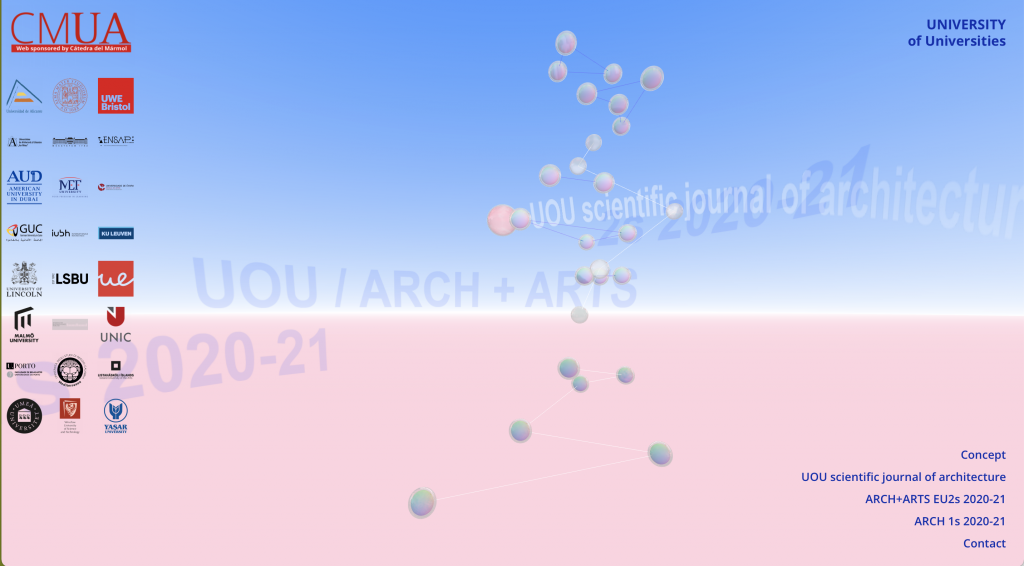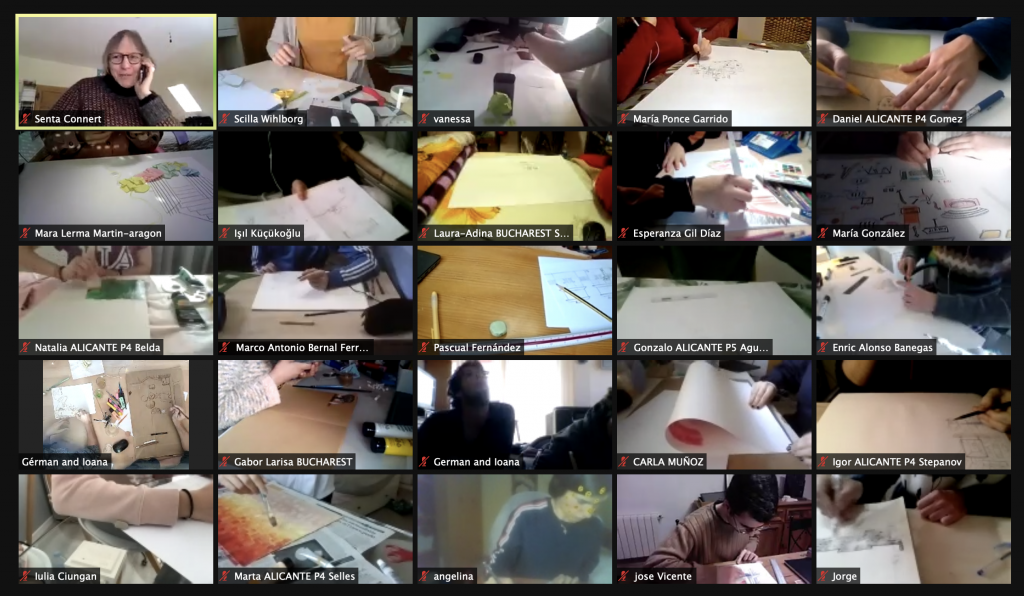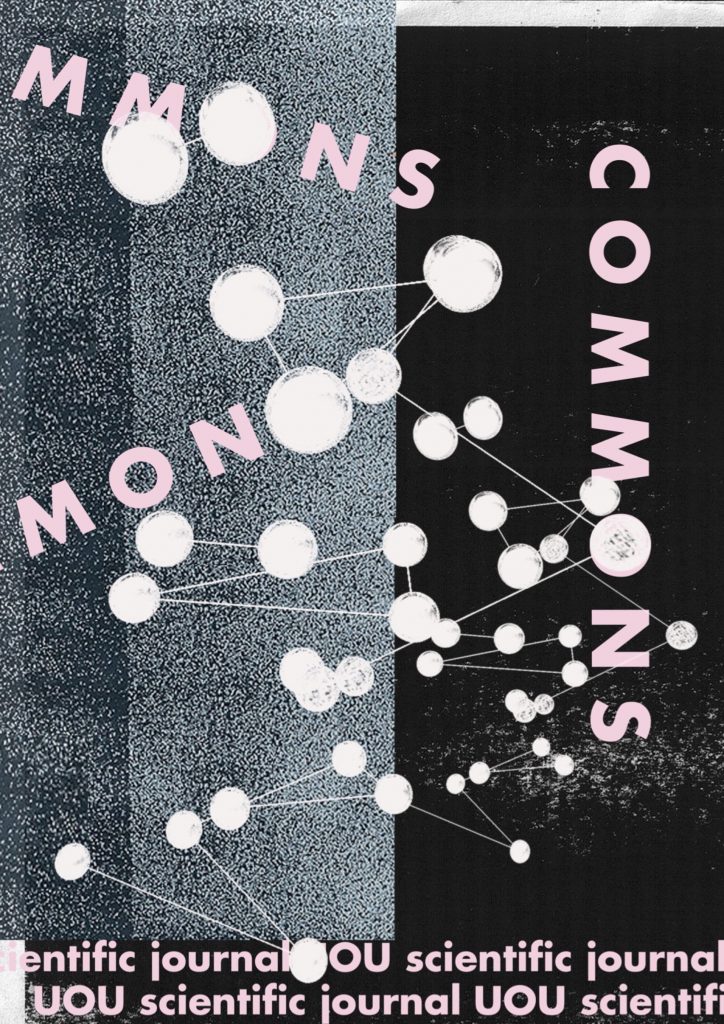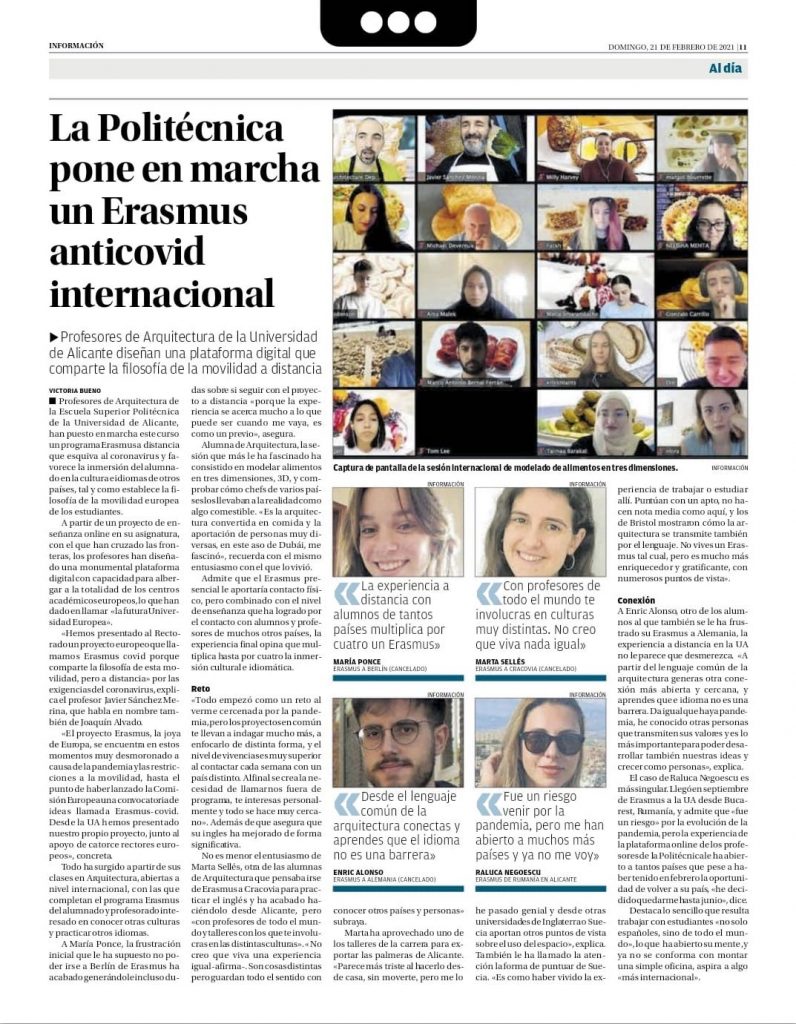University of Universities [UOU]
Defining the basis for the KA2 ERASMUS Project on the International Teaching of Architecture.
March 2020 gave us an opportunity: to stop for a while and reflect on the pace of our daily routine and lives. It was the beginning of a new way of thinking. If the pandemic provoked instant changes in our lives from its very beginning, with the pass of the months, it became clear that many of these changes were not transient. They will remain with us and we will need to work with a “new normality”.
This text is a reflection on the opportunities that have emerged from the confinement for the Internationalization of Teaching Architecture in time of pandemic.
Therefore, it is important to state that here, the online teaching is a tool to reach our final interest: We are dealing with a deeper definition of Internationalization that goes beyond teaching in English to ERASMUS students in a single local culture.
International Design Studio at Alicante University
Our current academic year 2019/20 has finished with a debate between our colleagues, teachers of architecture design. Many of them have missed the face-to-face teaching and blamed the online teaching for provoking a distance with the students that prevented them to reach the expected results.
Still both Joaquín Alvado and I, teachers of the International Design Studio (3rd and 4th year), have highly valued the results of our 40 students.
The fact that 2/3 of our students were ERASMUS, and thus returned to their countries as soon as we knew about the immediate confinement, made us foresee an online teaching for the last 3 months. Beyond the virtual lectures, crits and tutorials, the exercises for the end of the year also required to be redefined. We discovered at least two remarkable points from this experience:
- The importance of continuing the staff exchange between universities all over the world, despite the difficulties in travelling: Each student was asked to invite an interesting teacher from the school of architecture to participate in the Final Crit. It was incredible to have, in the same crit, 20 favourite teachers from all over the world.
- The importance of expanding the classroom: During the confinement, the students continued working in groups. This time with a responsibility that produced a new type of architects as well as a different architecture from when they used to work face-to-face. Now, they are much more autonomous, with projects that materialize reflections over solutions, proposing new realities.
Having detected these benefits, our proposal for the new academic semester consists of organizing a course built on a network of different teachers from different schools of architecture around the world.
This is what we name UNIVERSITY of Universities with a double aim:
- To extend the limits of our universities, by bringing now a coordinated team of international teachers with their different research.
- To extend the notion of the classroom beyond its walls, by understanding now the space for learning as a landscape of life.
Each teacher will have the trust of the team and freedom to propose and direct a 2-week online workshop for all the students from the different schools participating in the experience. After these two weeks, another teacher-director takes over with a new theme. The other teachers continue as tutors of his/her students.
At the end of the course, we would have a series of International Workshops designed to work better online than face-to-face. And, as happened in the Exquisite corpse, every workshop would be an addition to the former one, following the attached calendar UOU/workshops v2.
Note for students:
An experience without extra hours. The 8-hour class per workshop in the evenings are reduced from the normal classes.
Note for teachers:
Since we haven’t got the same timetable, our workshops should be taught at different timing than our assigned teaching hours. For example, a proposal would be to teach our workshop in the afternoons/evening (8 hours workshop, that’s 8 hours extra teaching in the semester), and keeping our hours of classes for tutorials with our own students.
With the results and experience, we would elaborate the application of a KA2 ERASMUS research project between the participant universities.



